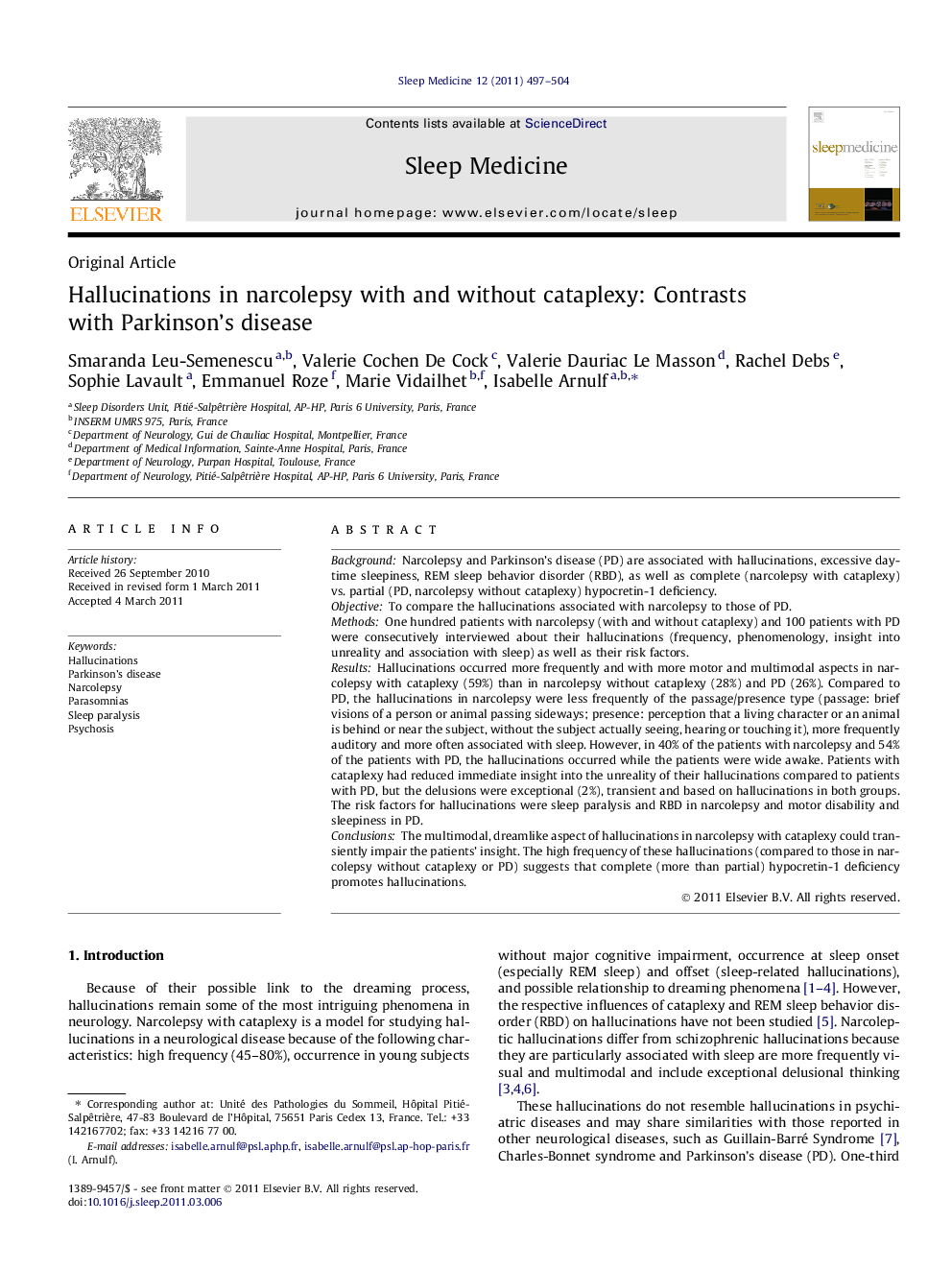| کد مقاله | کد نشریه | سال انتشار | مقاله انگلیسی | نسخه تمام متن |
|---|---|---|---|---|
| 3176819 | 1200281 | 2011 | 8 صفحه PDF | دانلود رایگان |

BackgroundNarcolepsy and Parkinson’s disease (PD) are associated with hallucinations, excessive daytime sleepiness, REM sleep behavior disorder (RBD), as well as complete (narcolepsy with cataplexy) vs. partial (PD, narcolepsy without cataplexy) hypocretin-1 deficiency.ObjectiveTo compare the hallucinations associated with narcolepsy to those of PD.MethodsOne hundred patients with narcolepsy (with and without cataplexy) and 100 patients with PD were consecutively interviewed about their hallucinations (frequency, phenomenology, insight into unreality and association with sleep) as well as their risk factors.ResultsHallucinations occurred more frequently and with more motor and multimodal aspects in narcolepsy with cataplexy (59%) than in narcolepsy without cataplexy (28%) and PD (26%). Compared to PD, the hallucinations in narcolepsy were less frequently of the passage/presence type (passage: brief visions of a person or animal passing sideways; presence: perception that a living character or an animal is behind or near the subject, without the subject actually seeing, hearing or touching it), more frequently auditory and more often associated with sleep. However, in 40% of the patients with narcolepsy and 54% of the patients with PD, the hallucinations occurred while the patients were wide awake. Patients with cataplexy had reduced immediate insight into the unreality of their hallucinations compared to patients with PD, but the delusions were exceptional (2%), transient and based on hallucinations in both groups. The risk factors for hallucinations were sleep paralysis and RBD in narcolepsy and motor disability and sleepiness in PD.ConclusionsThe multimodal, dreamlike aspect of hallucinations in narcolepsy with cataplexy could transiently impair the patients’ insight. The high frequency of these hallucinations (compared to those in narcolepsy without cataplexy or PD) suggests that complete (more than partial) hypocretin-1 deficiency promotes hallucinations.
Journal: Sleep Medicine - Volume 12, Issue 5, May 2011, Pages 497–504